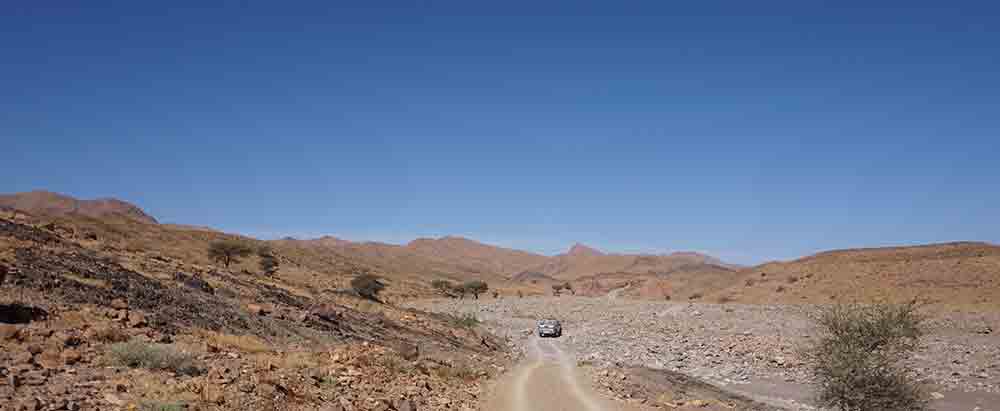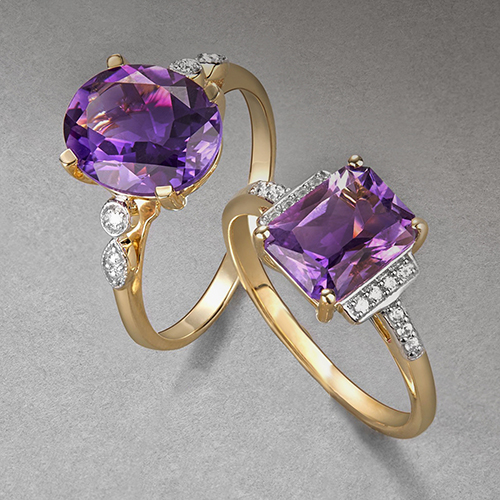Discovered in 1990, Moroccan Amethyst represents one of the newest varieties of gemstone to be found, and certainly one of the most recent to set the bar on a global scale. Colombian Emeralds have been valued since the Spanish Conquistadors developed industrial mining in the 1530s. Ceylon Sapphires have an even richer history, having been already highly valued for centuries by the time Marco Polo was writing at the close of the 13th Century. Despite its discovery in 1990, it was not until 2009 that this Amethyst was brought to the world stage and set a new standard for quality Amethyst.
For 19 years, this gemstone was only known to the locals of the remote Tata province of Morocco, and was mined almost exclusively by the inhabitants of the village of Boudi. The first foreign gemstone dealer to ever see this stone was a dealer called Zee Haag and that was as late as 2007. Using handheld tools, the supply was always very restricted, meaning this stone was of little marketable value. Three years after this stone was revealed to the market our mining contact, Salah, was able to secure access to the open pit mine. After reinvesting heavily for 12 months, he had transformed the mining operation from exclusively hand tools to using more modern techniques.
Access to the mine is extremely limited. 4km of the journey is done across open desert with no road, but an ever greater distance is only ‘on road’ if one’s definition of ‘road’ is very flexible.

Nestled in between mountains, the mining site is 1800 metres above sea level. Predictably, lack of water and electrical power are major mining challenges, as well as soaring summer temperatures which regularly reach over 49°C. It is in these mountains, some 450 million years old, the precious Amethyst is buried, scattered across hundreds of square metres.
This Amethyst is formed in a very unique way, which is more similar to Opal formation than Amethyst from other sources. Most Amethyst in the world market is formed in geodes, which are essentially the limestone fossils of ancient tree trunks. Inside these cavities, Amethyst crystals grow from the percolation of water with minerals dissolved within. However, Moroccan Amethyst forms because of a process called hydrothermal deposition.
In this process, hot water (hydrothermal), heated by magma or friction from the movement of tectonic plates, dissolves elements within it. Because the water is hot, it is able to dissolve more elements than it would at cooler temperatures. This water then washes over millions of years through the cavities in the rocks where it changes temperature. If it cools by moving away from the magma flow, the dissolved elements are deposited via a process called precipitation. If the water flow heats up above boiling point, then the water boils off, leaving the soluble elements behind. Significantly, in the case of Moroccan Amethyst, one of these elements includes iron which, alongside oxygen, forms the Haematite inclusions which give the gemstones from this source their unique red flashes.
Most of the material coming out of the mine is of a poor grade, often being sold by dealers as ‘cabochon grade’, and this material accounts for as much as 80% of the mine’s output. Colour zoning is very common in these Amethysts as both the unique Haematite inclusions, and the desirable natural saturation of colour require significant deposits of iron. This iron is deposited along what can only be described as a smaller distinct trigonal crystal pattern within the larger trigonal crystal structure of the Quartz material. Though usually considered a negative, in the case of Moroccan Amethyst, master cutters have been able to make innovative use of this ‘hour glass’ formation in couture designs.
Moroccan Amethyst has set a new standard in Amethyst quality, bringing it on a par with Colombian Emerald and Ceylon Sapphire because, like these two highly prized stones, it usually requires no enhancement by man. Many wrongly assume heat treatment increases the saturation and tone of Amethyst, perhaps confusing the gemstone’s reaction to treating Aquamarine, where heating does increase the perceived colour. With heat treatment, Amethyst will do the reverse and lose saturation.
In the past ‘Siberian Amethyst’ was the standard-setter when it came to globally regarded Amethyst, however, material from Morocco can fairly be described as having surpassed this standard. Evidence of this is prominent at many trade shows where dealers are trying to use ‘Siberian’ as a prefix denoting colour rather than provenance; in much the same way Paraiba no longer refers to Tourmaline from the Batalha mine but to the colour caused by the presence of copper. By using the Siberian prefix in this way, they hope to mix the finer Moroccan material within their existing Siberian inventories. This is why it is more important than ever to control this material from mine to market.
This material stands out for two phenomena. The first is the microscopic Haematite inclusions that permeate throughout this material. These are formed by the deposition of iron atoms within the cocktail that would grow into the Amethyst and the reaction of these iron impurities with oxygen atoms. These Haematite inclusions create a rare phenomenon within the Quartz family wherein there are flashes of red visible to the naked eye, despite the fact that these inclusions are often not visible unless under microscope. These inclusions have already helped gemmologists remove from the market two sizeable parcels of synthetic Amethyst being sold as natural Moroccan Amethyst.
The second phenomenon Amethyst from this origin displays is a much stronger than usual pleochroism. Gemmological laboratories usually grade Amethyst as having “very low” pleochroism if any at all. However, Moroccan material has been graded as “medium”, which for those familiar with the language of gemmological laboratories is high praise indeed, and puts this on a par with varieties of Tourmaline. Both of these highly sought-after phenomenon are contributing to the price escalation currently being seen in the market.

Mined remotely under extremely harsh conditions, Mother Nature has hidden her finest Amethyst for centuries, only choosing to reveal it to the wider world in the last few years. Moroccan Amethyst has caused a huge stir in the market and has prompted a paradigm shift in how we value Amethyst. Find out more about how we source this unique gem here.

